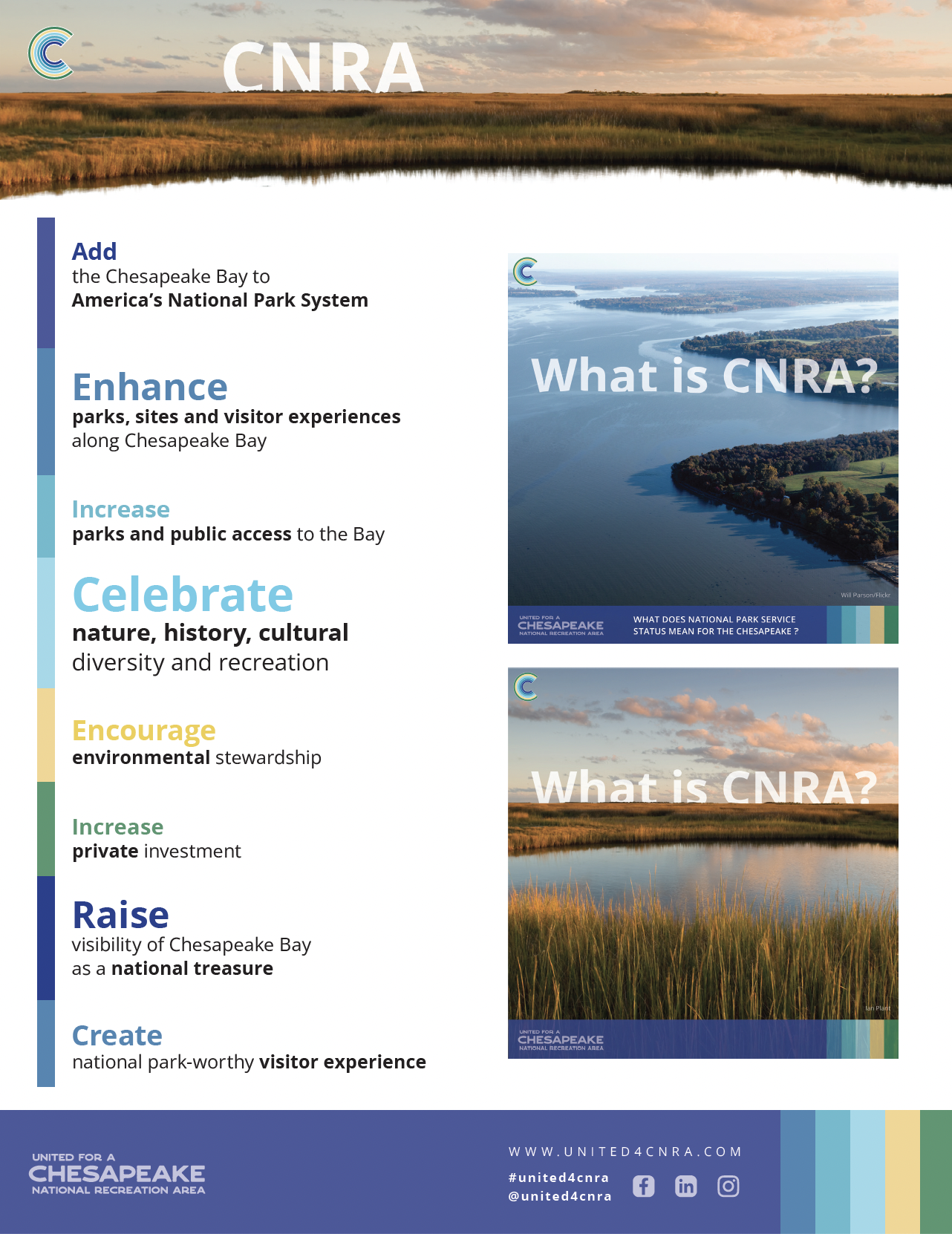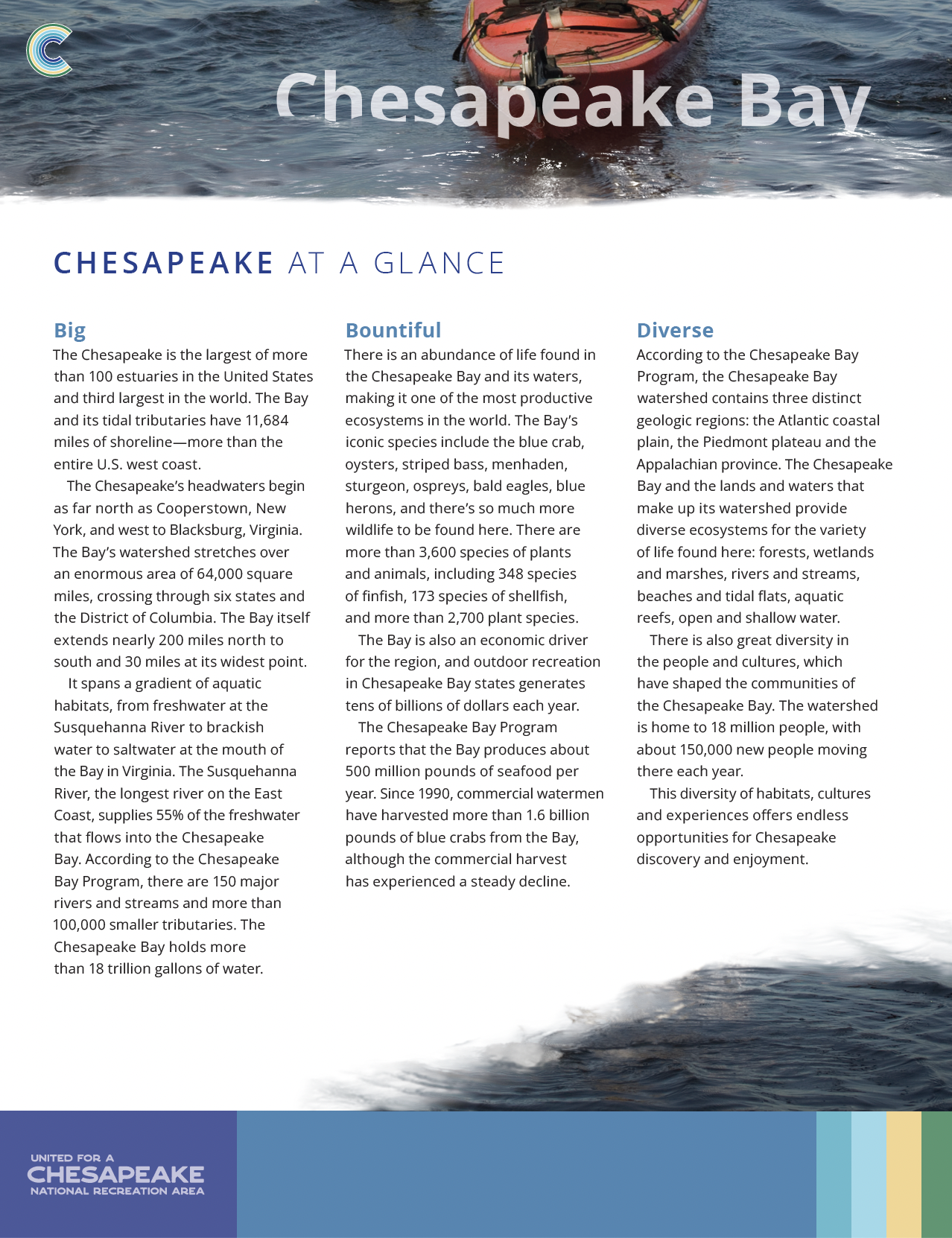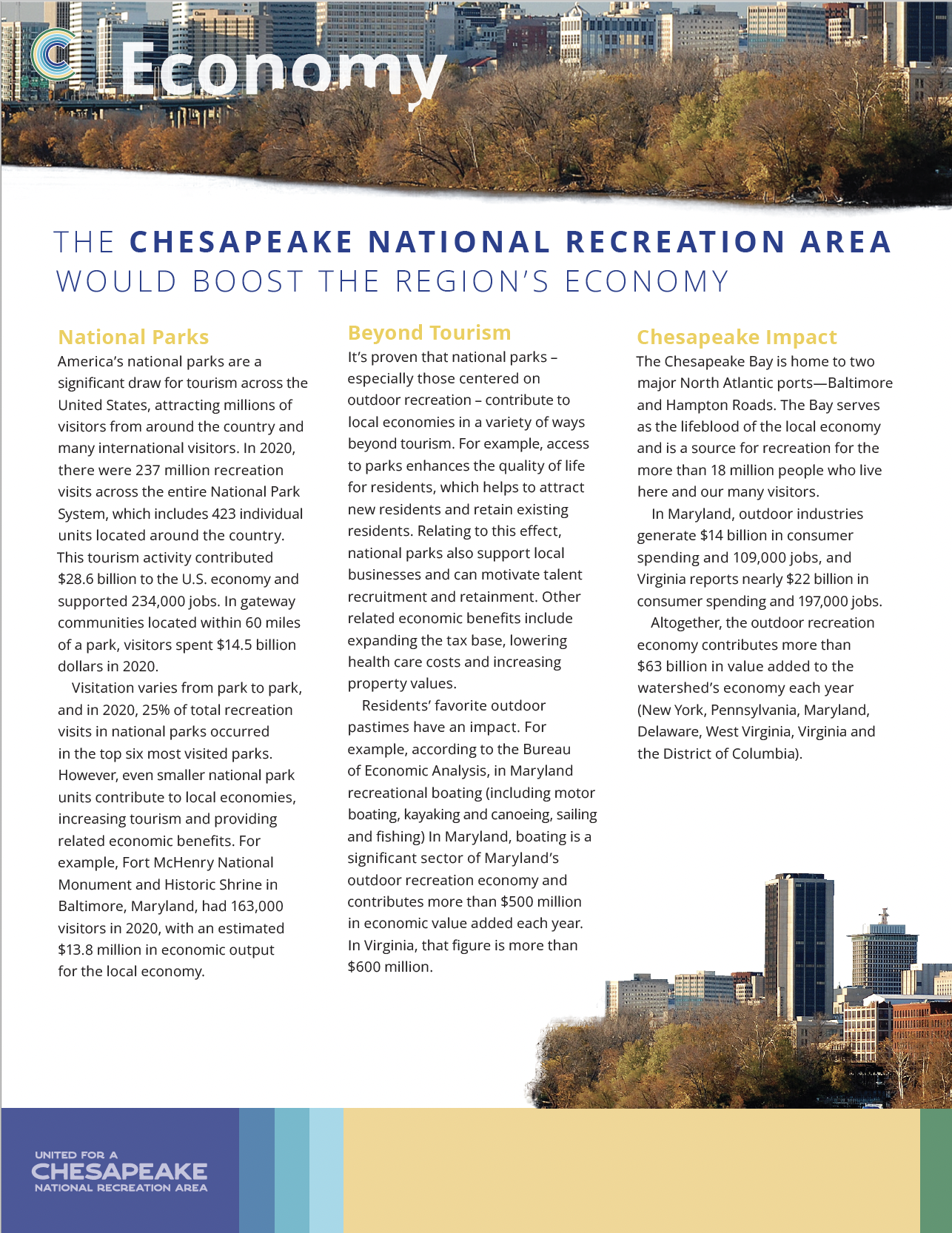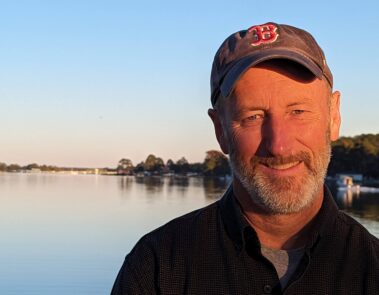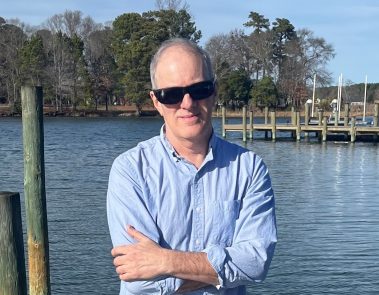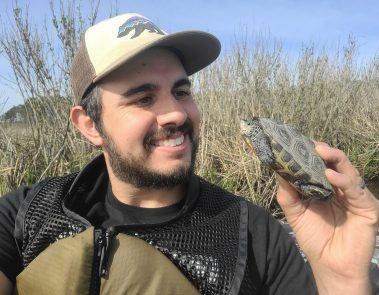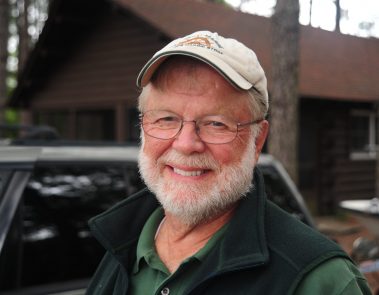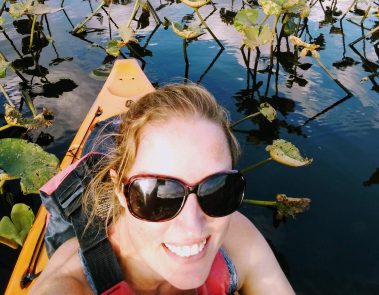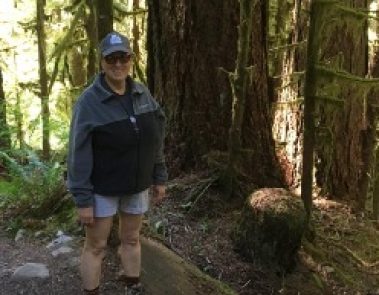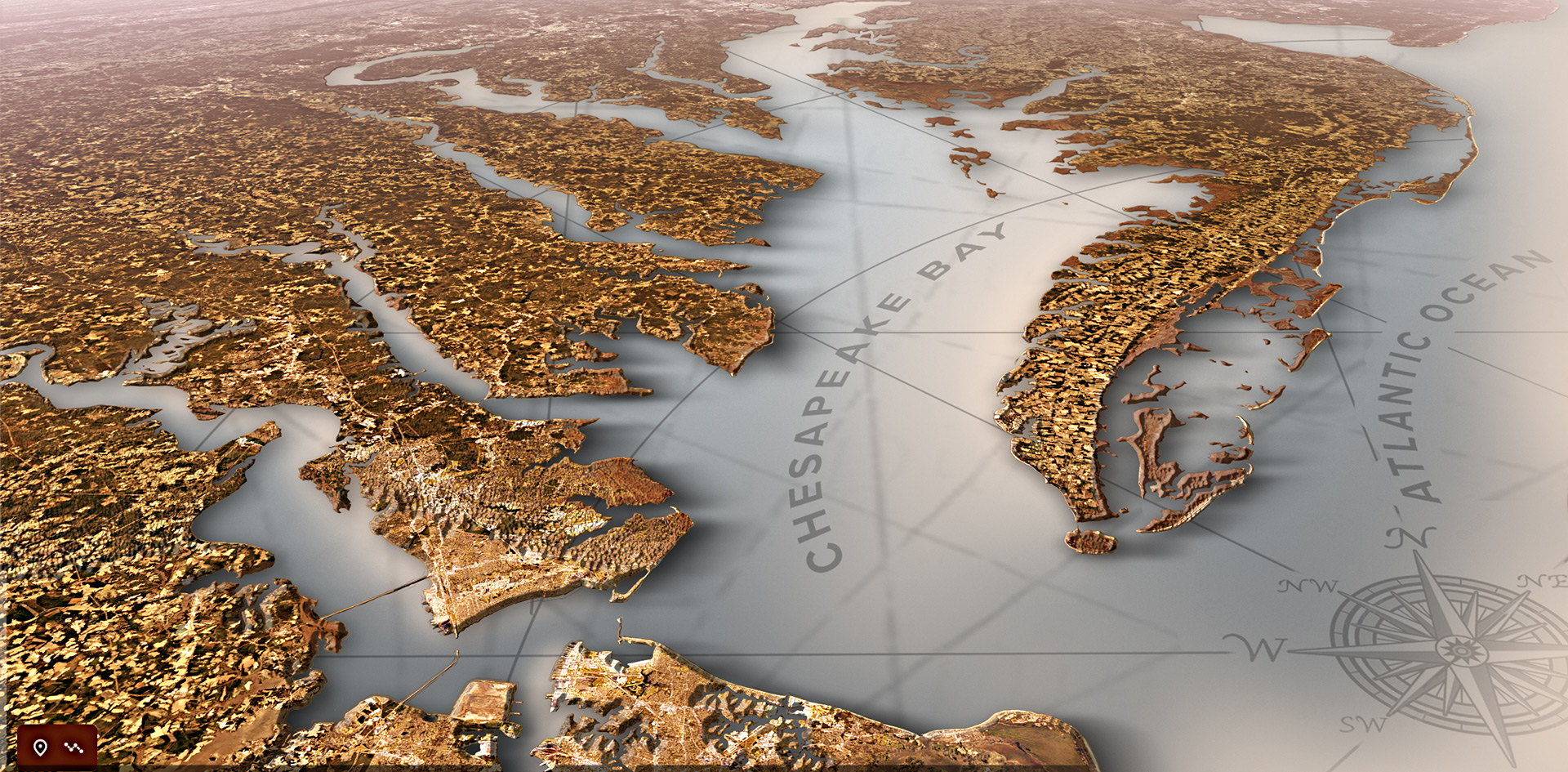Support The Chesapeake National Recreation Area Act!
It’s Time for the Chesapeake National Recreation Area
Big, beautiful, bountiful, diverse, historic, majestic.
When we think about our national parks and the many special places of the National Park System, these are words that often come to mind. Big, beautiful, bountiful, diverse, historic, and majestic are also words that perfectly describe our nation’s largest estuary: the Chesapeake Bay. The Chesapeake Bay is a natural wonder. There is an abundance of life in the Chesapeake, where freshwater from rivers and streams mingles with saltwater from the Atlantic. The Chesapeake Bay is one of the most productive ecosystems in the world, and its tributaries, wetlands, and forests are home to amazing and diverse species.
In July 2023, U.S. Senator Chris Van Hollen and Congressman John Sarbanes (both D-Md.) introduced their bipartisan, bicameral legislation entitled, The Chesapeake National Recreation Area Act (S.2620 and HR 5035). If passed into law, the legislation will designate a unified Chesapeake National Recreation Area (CNRA) as part of the National Park System, designating a collection of new and existing parks and public lands along the Bay as the new CNRA. Places that highlight the Bay across Maryland and Virginia, such as state and local parks and wildlife refuges, could become part of the CNRA and benefit from the resources of the National Park Service to help improve the visitor experience, improve public access to the Bay, protect the natural environment and tell an interesting story about our region.
The CNRA will raise the visibility of the Chesapeake Bay as an important resource, encourage upcoming generations to protect the Bay, create sustainable jobs, increase private investment in the Bay region, add new sites to access the Bay, link all the park sites around the Bay with a common visitor experience and invite people to explore.
Today the Chesapeake is recognized as a national treasure and the region’s greatest natural and cultural asset. Tourism and nature-based recreation are among the drivers of an economy serving a population of more than 18 million people. Outdoor recreation thrives here, as exemplified by Maryland, which reports $14 billion in consumer spending and 109,000 jobs, and by Virginia, reporting nearly $22 billion in consumer spending and 197,000 jobs generated by outdoor industries.
The Chesapeake Bay is woven into the fabric of our nation’s history. Its waters flow through the cultural identities of the many people who call the Chesapeake their home. The moments of life found here—watermen tending to crab pots at sunrise, an osprey making an acrobatic dive for a fish, a quiet paddle on a creek—rival those found anywhere else in the world.
It’s no secret that the Chesapeake Bay is also in trouble. For 40 years, partners have been working tirelessly to address pollution challenges that harm the waters and wildlife of the Bay. However, the monumental effort to restore the Bay, which involves government at all levels, universities, nonprofits, advocacy groups, and everyday people, is a feat in its own right. The story of the Chesapeake Bay restoration effort is one that must be widely shared to educate the public and to inspire the next generation of conservation stewards who will restore and protect the Chesapeake Bay.
There’s yet another important descriptor of our national parks: worthy. National parks represent places and landscapes worthy of protection and celebration. When places are included as units of the National Park System, the experiences and stories of these places are elevated on a national and international scale. National parks show the world how a singular place represents an essential part of the total American experience.
The Chesapeake is big, beautiful, bountiful, diverse, historic, majestic, and—yes—worthy. It’s time for the Chesapeake National Recreation Area. Join us to establish Chesapeake National Recreation Area and help to forever protect the Chesapeake Bay.
[1] Outdoor Industry Association, Advocacy, https://outdoorindustry.org/advocacy/, last accessed 7/23/2020.
To: Federal, state and local elected officials
From: Joanne Couser
Recognized as ‘unquestionably nationally significant’ by the National Park Service and called a national treasure by both Democratic and Republican U.S. presidents, we agree that the Chesapeake Bay deserves a unit of the National Park System dedicated to the Chesapeake Bay and support the effort underway to designate a collection of both existing and future parks and public lands along the Bay as a new Chesapeake National Recreation Area (CNRA).
Places that highlight the Bay across Maryland and Virginia, such as state and local parks and wildlife refuges, should become part of the CNRA to benefit from the resources of the National Park Service. We believe that National Park status for the Chesapeake will improve the visitor experience, increase public access to the Bay, protect the natural environment and share the interesting stories about our region.
The formal connection of these treasured areas, the expertise of the National Park Service, the additional federal resources for conservation and public access, and the power of National Park designation and branding would put the Chesapeake Bay on par with other nationally significant landscapes. A Chesapeake National Recreation Area would enhance tourism in the Bay region and provide new opportunities for communities to engage with outdoor recreation and Bay-focused tourism. Additionally, it would boost national and international support for the protection and restoration of the Chesapeake Bay.
We urge you to support the proposed Chesapeake National Recreation Area.
BIG
BIG
The Chesapeake’s headwaters begin as far north as Cooperstown, New York, and west to Blacksburg, Virginia. The Bay’s watershed stretches over an enormous area of 64,000 square miles, crossing through six states and the District of Columbia. The Bay itself extends nearly 200 miles north to south and 30 miles at its widest point. It spans a gradient of aquatic habitats, from freshwater at the Susquehanna River to brackish water to saltwater at the mouth of the Bay in Virginia.
BEAUTIFUL
BEAUTIFUL
The scenes and picturesque moments of life found on the lands and waters of the Chesapeake Bay are stunning. From the quiet creeks of the Eastern Shore to the mighty rivers, to the Bay itself, the natural beauty found here is extraordinary.
BOUNTIFUL
BOUNTIFUL
There is an abundance of life found in the Chesapeake Bay and its waters, making it one of the most productive ecosystems in the world. The Bay’s iconic species include the blue crab, oysters, striped bass, menhaden, sturgeon, ospreys, bald eagles, blue herons, and there’s so much more wildlife to be found here. The Bay is also an economic driver for the region, and outdoor recreation in Chesapeake Bay states generates tens of billions of dollars each year.
DIVERSE
DIVERSE
The Chesapeake Bay and the lands and waters that make up its watershed provide diverse ecosystems for the variety of life found here: forests, wetlands and marshes, rivers and streams, beaches and tidal flats, aquatic reefs, open and shallow water. There is also great diversity in the people and cultures who have shaped the communities of the Chesapeake Bay. This diversity of habitats, cultures, and experiences offers endless opportunities for Chesapeake discovery and enjoyment.
HISTORIC
HISTORIC
Much of our nation’s deep history, founding, and rise took place right here in the Chesapeake: paramount chief Powhatan’s center of leadership at Werowocomoco; Captain John Smith’s voyages and famously accurate map; the Jamestown Colony, the arrival of ships of enslaved Africans; the founding of the nation’s capital on the Potomac; battlegrounds of the American Revolution, War of 1812, and Civil War; and Harriet Tubman’s heroic journeys to freedom, just to name a few. Throughout the Chesapeake region there are gateways to the places and stories of America.
MAJESTIC
MAJESTIC
Two US presidents, Ronald Reagan and Barack Obama, have declared the Chesapeake Bay a national treasure. National Park Service resource studies state that the Chesapeake Bay is “unquestionably nationally significant.” Since 2003, the National Park Service has had a Chesapeake Bay office working to connect people to experiences of the natural and cultural heritage of the Chesapeake. Indeed, the natural beauty, ecological and cultural diversity, and rich history of the Chesapeake make this place nothing short of majestic.
WORTHY
WORTHY
The Chesapeake Bay is worthy of inclusion in the National Park System!
Evolution of the National Park Service in the Chesapeake Bay
2023
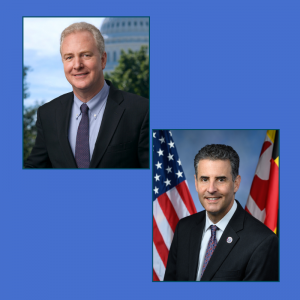
July
U.S. Senator Chris Van Hollen and Congressman John Sarbanes (both D-Md.) introduced their bipartisan, bicameral legislation entitled, The Chesapeake National Recreation Area Act (S.2620 and HR 5035). If passed into law, the legislation will designate a unified Chesapeake National Recreation Area (CNRA) as part of the National Park System.
2022

December
The Washington Post Editorial Board supports the proposed CNRA, writing that the National Park Service’s track record suggests the CNRA would allow “more Americans to enjoy the bay’s wonders and, in the process, expand the constituency for cleaning it up.”
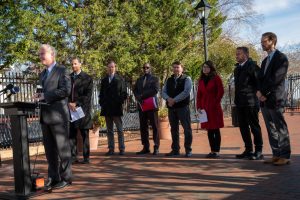
Photo by Anne Delano Weathersby/Play Back Shots
November
At a press conference overlooking the Chesapeake Bay, U.S. Senator Chris Van Hollen and Congressman John Sarbanes were joined by members of a congressional working group to announce draft legislation that would create a unified CNRA and invite public comment.
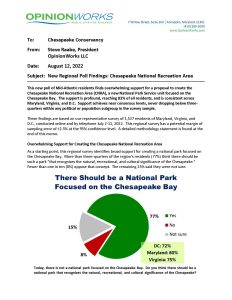
July
A July 2022 public opinion poll showed profound support for National Park Service status for the Chesapeake, with 83% of Maryland, Virginia and Washington, DC respondents in favor of establishing the CNRA.

June
U.S. Senator Chris Van Hollen and Congressman John Sarbanes (both D-Md.) release key principles developed in collaboration with a working group that will guide their work to create a unified Chesapeake National Recreation Area (CNRA).
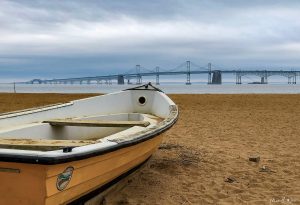
Photo by Michael Weiss
2021
U.S. Senator Chris Van Hollen and Congressman John Sarbanes (both D-Md.) led a bicameral group of lawmakers and more than 30 regional organizations in forming a Working Group to explore the designation of a Chesapeake National Recreation Area managed by the National Park Service. Many members of the working group had been meeting informally prior to this. Join us to establish the Chesapeake Bay National Recreation Area!

Photo by Matthew Beziat
2020
Governor Larry Hogan of Maryland and Governor Ralph Northam of Virginia call for legislation to establish a Chesapeake National Recreation Area, as a campaign for this national park unit dedicated to the Chesapeake Bay, building on a decades-long vision, is launched!
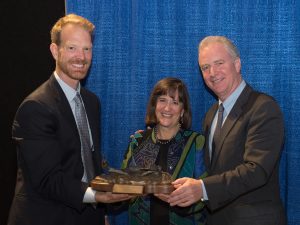
Ann P. Swanson, Executive Director, Chesapeake Bay Commission, accepted the 2019 Lifetime Achievement Award, presented by Chesapeake Conservancy President & CEO Joel Dunn and U.S. Senator Chris Van Hollen (Md.). Photo by David Harp
2019
U.S. Senator Chris Van Hollen delivers keynote address at the Chesapeake Conservancy’s Champions of the Chesapeake Awards announcing his intent to pursue National Recreation Area designation for the Chesapeake. The Champions of the Chesapeake honorees included Chesapeake Bay Commission Leadership – Senator Gene Yaw (PA), Delegate David Bulova (VA), and Senator Guy Guzzone (MD), and Ann P. Swanson, Executive Director, Chesapeake Bay Commission.

Photo by Jerry Edmundson
2010
The Department of the Interior forwards to Congress the Chesapeake Bay Special Resource Study completed by the National Park Service. In his letter to Congress, Assistant Secretary for Fish and Wildlife and Parks Thomas L. Strickland highlights two principal findings of the Special Resource Study: 1.) “A unit of the National Park System encompassing elements of the park, reserve, and preserve concepts meets NPS criteria and would make a significant contribution to the protection and public enjoyment of the Bay” and 2.) “The Gateways Network should be enhanced and made permanent with an ongoing funding commitment.”
Charlie Stek, Chesapeake Conservancy board member and former senior staffer to U.S. Senator Paul Sarbanes, pens an op-ed in the Chesapeake Bay Journal calling for a national park for the Chesapeake Bay.

Photo by Pete Souza. Dec. 6, 2012
2009
President Barack Obama issues Executive Order 13508, establishing that the Chesapeake Bay is a national treasure as the largest estuary in the United States and one of the largest and most biologically productive estuaries in the world. The Executive Order outlines an enhanced federal role and agency cooperation on the Chesapeake Bay, and an enhanced strategy to reduce pollution and improve water quality in the Chesapeake Bay, conserve landscapes and ecosystems, and expand public access. The Executive Order results in a new strategy to protect and restore the Chesapeake Bay.

Photo by National Park Service
2006
Congress passes a law to designate the Captain John Smith Chesapeake National Historic Trail, the nation’s first water-based national historic trail. The Trail follows the routes of Captain John Smith as he explored the Chesapeake Bay between 1607 and 1609, and includes many of the Bay’s major rivers as well as the Bay itself.

Photo by Matt Wade
2004
At the request of Congress, the National Park Service completes a Special Resource Study on the Chesapeake Bay. The Special Resource Study finds that the “Chesapeake is unquestionably nationally significant and a major part of the nation’s heritage which the National Park System strives to represent and interpret.”2 The Special Resource Study calls for the Gateways program to be made permanent, and states that “a unit of the National Park System encompassing one or several of these alternate concepts could make a significant contribution to the protection and public enjoyment of the Chesapeake Bay.”3
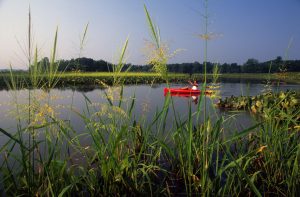
Photo by NPS/Middleton Evans
1998
Congress passes the Chesapeake Bay Initiative Act to establish the Chesapeake Bay Gateways and Watertrails Network and the Chesapeake Bay Gateways Grants Assistance Program. The legislation, sponsored by Senator Paul Sarbanes (D-MD), empowers the National Park Service to provide assistance to local communities, nonprofits, and other organizations to conserve, restore, and interpret recreational, historical, and cultural resources of the Chesapeake at Gateways “sites” throughout the Chesapeake.

Photo by National Park Service
1993
The National Park Service signs an MOU with the EPA Chesapeake Bay Program to actively support and participate in the Chesapeake Bay Program by providing public access to the Chesapeake and by conserving and interpreting the natural and cultural resources of the Chesapeake Bay.
 1986
1986
The Annapolis Capital Gazette publishes an editorial titled, “Chesapeake Bay National Park is a good idea.” The piece comments on an initiative led by County Executive Jim Lighthizer to explore the possibility of a Chesapeake Bay National Park and link together existing parks and natural sites throughout the Bay. The editorial states, “The point is that a Chesapeake Bay National Park is no more far-fetched than the Cape Cod National Seashore, or Acadia National Park in Maine, or the Smoky Mountains National Park along the Blue Ridge…We think that a Chesapeake Bay National Park is an excellent idea. It would bring access and use of the bay under one of the best federal agencies in the country, the National Park Service.”

Photo by Pete Souza/Public Domain
1984
The Chesapeake Bay emerges as one of President Ronald Reagan’s signature environmental priorities during the election year of 1984. In his 1984 State of the Union address to a joint session of Congress, President Reagan states, “Though this is a time of budget constraints, I have requested for EPA one of the largest percentage budget increases of any agency. We will begin the long, necessary effort to clean up a productive recreational area and a special national resource – the Chesapeake Bay.”1 Reagan later tours the Bay in the summer of 1984.

Photo by Chesapeake Bay Program
1983
Following a five year study sponsored by Senator Charles “Mac” Mathias (R-MD) to assess the significant declines in aquatic and terrestrial wildlife of the Chesapeake Bay, the first Chesapeake Bay Agreement is adopted. The 1983 Chesapeake Bay Agreement affirms that the degradation of habitat and the substantial loss of wildlife in the Chesapeake requires a cooperative approach involving the Environmental Protection Agency (EPA), the State of Maryland, the Commonwealths of Pennsylvania and Virginia, and the District of Columbia. The Chesapeake Executive Council is formed, consisting of the signatory states and the EPA, to address pollution and species decline in the Chesapeake.
[1] Ronald Reagan, Address Before a Joint Session of the Congress on the State of the Union (1984).
[2] National Park Service, Chesapeake Bay Special Resource Study and Final Environmental Impact Statement (Annapolis, MD: U.S. Department of the Interior National Park Service, 2004, p. 63).
[3] Ibid, (p. vi).
FAQs
Imagine a 21st-century park—a collection of parks and other public lands in the Chesapeake Bay that bring national and international attention to the Bay’s significant natural, cultural, historical, and recreational resources. Formally connected through partnerships between the National Park Service, and communities and states, these parks would become the Chesapeake National Recreation Area (CNRA) and tell a common narrative about the nation’s largest estuary and one of the world’s largest environmental restoration efforts. This isn’t a new idea for the Chesapeake (see this editorial dating back to 1986), but it is an idea whose time has come.
Hub sites would enable partnerships between the National Park Service and communities and provide access to the Chesapeake Bay and to recreation and educational opportunities. Partner parks, such as state parks and national wildlife refuges, would voluntarily opt-in to the CNRA and benefit from additional resources and branding provided by the National Park Service.
The CNRA would highlight the Captain John Smith Chesapeake National Historic Trail, and could also offer connections to other trails such as the Star-Spangled Banner National Historic Trail, Potomac Heritage National Scenic Trail and the Washington-Rochambeau Revolutionary Route.
The formal connection of these hub sites and partner parks, the expertise of the National Park Service, the additional federal resources for conservation and public access, and the influence of National Park Service designation and branding would put the Chesapeake Bay on par with other nationally significant landscapes. Additionally, it would boost national and international support for the protection and restoration of the Chesapeake Bay.
It’s time for the Chesapeake National Recreation Area. Join our push to create the CNRA! Sign on as a partner in our effort or donate to fund our work to advance the goal!
For more information, contact Chesapeake Conservancy’s manager of external affairs Reed Perry at rperry@chesapeakeconservancy.org.
The National Park System includes 421 individual park units with at least 19 different naming designations such as national park, national historical park, national seashore, and national recreation area, to list a few. The various names have evolved over time and generally are meant to be self-explanatory such as national battlefield or national lakeshore. Regardless of nomenclature, these units are all commonly referred to as “parks”.
The 62 units formally designated as “National Parks” contain a variety of “outstanding natural features and ecological resources” and also typically encompass “large land or water areas to help provide adequate protection of the resources.”
The title “National Recreation Area” was originally given to reservoir parks managed by the Bureau of Reclamation. However, the origins of recreation focused parks go back much further to a national program during the 1930s managed by the NPS to establish “recreational demonstration areas” which developed new or expanded recreation opportunities in proximity to major population centers and to support under-represented communities with a deficit of outdoor recreation. For example, within the Chesapeake Watershed during the 1930s Catoctin Mountain Park and Prince William Forest Park were established and are still managed by the NPS today. More modern and well-known examples of national recreation areas in urban centers include Golden Gate National Recreation Area, Gateways National Recreation Area in New York and New Jersey, and Boston Harbor Islands National Recreation Area. These NPS partnership-oriented examples provide urban access to significant historic resources and important natural areas to offer outdoor recreation opportunities for large numbers of people. National recreation areas often explicitly permit boating, fishing, and hunting. There are currently 18 national recreation areas in the National Park System several of which are among the most visited park units across the nation.
The Chesapeake Bay is the largest estuary in the United States and is one of the most biologically rich and productive water bodies in the world. It has been formally recognized by the National Park Service as nationally significant and has been called a national treasure by both Republican and Democratic US presidents. The Chesapeake Bay is also the focus of one of the largest environmental restoration efforts in the world. Yet unlike other major landscapes in the United States, the Chesapeake Bay does not have a National Park System unit dedicated to the Chesapeake Bay itself.
Established as an official unit of the National Park System, a Chesapeake National Recreation Area would elevate the Chesapeake Bay and bring additional national and international recognition. More importantly, it would bring greater expertise and resources of the National Park Service, the world’s leading park agency, to the Chesapeake Bay and establish more points of public access to the Chesapeake Bay.
Some national recreation areas offer partnership models for how the Chesapeake National Recreation Area can work with already existing public lands to enhance protection and facilitate recreation on Chesapeake landscapes.
Imagine a 21st-century park—a collection of parks and other public lands in the Chesapeake Bay that bring national and international attention to the Bay’s significant natural, cultural, historical, and recreational resources. Formally connected through partnerships between the National Park Service, and communities and states, these parks would become the Chesapeake National Recreation Area (CNRA) and tell a common narrative about the nation’s largest estuary and one of the world’s largest environmental restoration efforts. This isn’t a new idea for the Chesapeake (see this editorial dating back to 1986), but it is an idea whose time has come.
Hub sites would enable partnerships between the National Park Service and communities and provide access to the Chesapeake Bay and to recreation and educational opportunities. Partner parks, such as state parks and national wildlife refuges, would voluntarily opt-in to the CNRA and benefit from additional resources and branding provided by the National Park Service.
The CNRA would highlight the Captain John Smith Chesapeake National Historic Trail, and could also offer connections to other trails such as the Star-Spangled Banner National Historic Trail, Potomac Heritage National Scenic Trail and the Washington-Rochambeau Revolutionary Route.
The formal connection of these hub sites and partner parks, the expertise of the National Park Service, the additional federal resources for conservation and public access, and the influence of National Park Service designation and branding would put the Chesapeake Bay on par with other nationally significant landscapes. Additionally, it would boost national and international support for the protection and restoration of the Chesapeake Bay.
It’s time for the Chesapeake National Recreation Area. Join our push to create the CNRA! Sign on as a partner in our effort or donate to fund our work to advance the goal!
For more information, contact Chesapeake Conservancy’s manager of external affairs Reed Perry at rperry@chesapeakeconservancy.org.
The National Park System includes 421 individual park units with at least 19 different naming designations such as national park, national historical park, national seashore, and national recreation area, to list a few. The various names have evolved over time and generally are meant to be self-explanatory such as national battlefield or national lakeshore. Regardless of nomenclature, these units are all commonly referred to as “parks”.
The 62 units formally designated as “National Parks” contain a variety of “outstanding natural features and ecological resources” and also typically encompass “large land or water areas to help provide adequate protection of the resources.”
The title “National Recreation Area” was originally given to reservoir parks managed by the Bureau of Reclamation. However, the origins of recreation focused parks go back much further to a national program during the 1930s managed by the NPS to establish “recreational demonstration areas” which developed new or expanded recreation opportunities in proximity to major population centers and to support under-represented communities with a deficit of outdoor recreation. For example, within the Chesapeake Watershed during the 1930s Catoctin Mountain Park and Prince William Forest Park were established and are still managed by the NPS today. More modern and well-known examples of national recreation areas in urban centers include Golden Gate National Recreation Area, Gateways National Recreation Area in New York and New Jersey, and Boston Harbor Islands National Recreation Area. These NPS partnership-oriented examples provide urban access to significant historic resources and important natural areas to offer outdoor recreation opportunities for large numbers of people. National recreation areas often explicitly permit boating, fishing, and hunting. There are currently 18 national recreation areas in the National Park System several of which are among the most visited park units across the nation.
The Chesapeake Bay is the largest estuary in the United States and is one of the most biologically rich and productive water bodies in the world. It has been formally recognized by the National Park Service as nationally significant and has been called a national treasure by both Republican and Democratic US presidents. The Chesapeake Bay is also the focus of one of the largest environmental restoration efforts in the world. Yet unlike other major landscapes in the United States, the Chesapeake Bay does not have a National Park System unit dedicated to the Chesapeake Bay itself.
Established as an official unit of the National Park System, a Chesapeake National Recreation Area would elevate the Chesapeake Bay and bring additional national and international recognition. More importantly, it would bring greater expertise and resources of the National Park Service, the world’s leading park agency, to the Chesapeake Bay and establish more points of public access to the Chesapeake Bay.
Some national recreation areas offer partnership models for how the Chesapeake National Recreation Area can work with already existing public lands to enhance protection and facilitate recreation on Chesapeake landscapes.
Economic benefits
National park visitors make a significant contribution to the nation’s economy and, especially, to gateway communities adjacent to these areas. The National Park Service reports that 327.5 million visitors in 2019 spent $21 billion in local gateway regions while visiting national parks. The national economic impact of this spending supported 340,500 jobs, $14.1 billion in labor income, $24.3 billion in value added, and $41.7 billion in economic output.[1]
Twenty national park units in Maryland and Virginia contributed $1.07 billion to the region’s economy in 2019 and national park units in the District of Columbia added an additional $830 million.[2] National parks and monuments are also among the top four priority destinations for international tourism. Over one third of all international visitors visit national parks and monuments.
The principal economic beneficiaries of park visitation include vendors in the food, lodging, outdoor recreation, and travel businesses. Other local and national firms benefit by providing services or supplies required for operating, maintaining, and sustaining recreation sites and opportunities.
A Chesapeake National Recreation Area would create a major new draw for visitors to the region and make substantial contributions to the region’s economy. Consider, for example, the economic impacts of a set of existing national park units relevant to a Chesapeake National Recreation Area model.
2019 National Park Visitor Spending Effects and Federal Appropriations |
||
| Park Unit | 2019 Economic Output[3] | FY20 Operations Appropriation[4] |
| Gateway National Recreation Area | $287.5 million | $26.3 million |
| Santa Monica Mountains National Recreation Area | $43 million | $8.9 million |
| Shenandoah National Park | $128.8 million | $12.6 million |
| Cape Cod National Seashore | $672 million | $8 million |
| Assateague Island National Seashore | $116.8 million | $5.6 million |
| Indiana Dunes National Park | $130 million | $9.5 million |
| Chesapeake & Ohio Canal National Historical Park | $143 million | $9.6 million |
| Boston National Historical Park | $273 million | $9.9 million |
Additional NPS resources
National Park Service sites have long been recognized for their focus on interpretation—engaging visitors with the many stories and meanings of a place. In recent years, the National Park Service has increasingly focused on conveying the stories of under-represented peoples and communities. The Chesapeake watershed is a diverse landscape, rich with under-represented stories. A Chesapeake National Recreation Area would bring additional resources and capacity, technical assistance, and financial assistance to interpreting these stories at participating sites.
Additional outside investment
National parks heighten the national profile and public consciousness of any place, including one as recognized as the Chesapeake Bay. They broaden the constituency and interest beyond a local or regional scale, because they are national parks. With this comes an increased rationale for investments and commitments to enhance, restore, and conserve resources and visitor experiences associated with the park. This has played out in and around many national parks where agencies, the private sector, and philanthropists have invested in a wide range of projects. Designation of a Chesapeake National Recreation Area would bring an added focus and rationale for investing in participating sites and communities.
[1] Cullinane Thomas, C., and L. Koontz. 2020. 2019 national park visitor spending effects: Economic contributions to local communities, states, and the nation. Natural Resource Report NPS/NRSS/EQD/NRR—2020/2110. National Park Service, Fort Collins, Colorado.
[2] Ibid.
[3] Ibid.
[4] U.S. Department of the Interior, Budget Justifications and Performance Information Fiscal Year 2021 National Park Service, https://www.doi.gov/sites/doi.gov/files/uploads/fy2021-budget-justification-nps.pdf
This proposal is for a limited, but official and permanent, National Park Service presence in the Chesapeake Bay. The national recreation area model allows for voluntary “opt-in” partnerships with state parks and other already existing public lands that would represent the full Chesapeake National Recreation Area. These existing parks would benefit from National Park Service branding and marketing related to the Chesapeake National Recreation Area, but would retain their existing management and ownership. The National Park Service would enter into partnership agreements to define the responsibilities of each party. In addition, the National Park Service would acquire, through purchase or through donation, parcels that will enhance public access to the Chesapeake Bay and provide the National Park Service a limited land base through which to operate. These National Park Service properties combined with “opt-in” partner parks (state parks, wildlife areas, etc.) would represent the full Chesapeake National Recreation Area.
A Chesapeake National Recreation Area would greatly enhance recreation and businesses based in the Chesapeake Bay. Boating, fishing, hunting, and other recreational uses are part of the Chesapeake’s rich heritage. Commercial fishing is also an important part of the Chesapeake Bay’s economy and heritage, and this would be a celebrated part of the Chesapeake National Recreation Area.
Boating, fishing, hunting, and other recreational uses of the Chesapeake Bay are primarily managed by state governments. The Chesapeake National Recreation Area would not impose any additional regulations on recreational or business activities in the Chesapeake Bay, nor would the National Park Service authority supersede state authority on these matters.
The National Park Service would have authority only on the few parcels under its ownership in the Chesapeake National Recreation Area.
Having an official National Park Service unit would greatly enhance tourism and marketing opportunities, as well as recreation opportunities, in the Chesapeake Bay.
No land would be acquired without the consent of the landowner. Only those landowners who choose to participate would be directly affected by designation. There would be no additional regulations governing non-participating private or public landowners.
Congress establishes national recreation areas through specific enabling laws. These statutes set out the specific authorities of a particular national recreation area. Congress has wide latitude in defining authorities. National recreation area statutes—even for more traditional areas—often allow activities prohibited at national parks, such as hunting, fishing, trapping, etc.
Designation as a national recreation area would NOT impact or otherwise affect statutory authority concerning navigation or regulation of commercial or recreational fishing activities in the Chesapeake Bay or its tributaries.
Designation as a national recreation area would NOT authorize acquisition of private land or interests in land without the consent of the owner.
Congress appropriates funding annually for national recreation areas in the Department of the Interior’s budget for the operations of the National Park Service. The level of funding is based on the scale and scope of the operations. Two relevant partnership-focused examples in the NPS budget for fiscal year 2019 are Boston Harbor Islands National Recreation Area, at $1.1 million, with 16 full-time-equivalent staff, and Mississippi River National River and Recreation Area, which has a budget of $1.7 million and 24 total staff.
To supplement federal funding, management of the CNRA would utilize additional funding tools, including philanthropy, recreation fees at National Park Service properties, and other revenue sources. Opt-in partners would continue to provide funding for their own sites.
It is the goal of core nonprofit partners to raise private funds to supplement the budget for the CNRA. This funding may come from local and national private sources, such as competitive grants, foundations, and private donors. Achieving national recreation area status typically expands private fundraising opportunities by enhancing the region’s ability to compete for funding from non-local sources.
The proposed Chesapeake National Recreation Area Act would permanently authorize the Chesapeake Gateways program as a part of the CNRA and should include sufficient base funding for management of the Gateways program and the national recreation area. This would enhance the technical and financial assistance now provided to various state and local agencies and non-governmental organizations.
Legislation that would establish the Chesapeake National Recreation Area should include specific provisions to prevent impacts on military installations, operations, and missions in the Chesapeake Bay watershed. The designation of a Chesapeake National Recreation Area would not alter the authority of the Secretary of Defense to conduct military operations at installations and facilities within the Chesapeake Bay and its watershed. In addition, this bill would not alter or restrict military overflights over lands encompassed within the boundary of the Chesapeake National Recreation Area. This bill would also not preclude the new designation of special airspace or the use of military flight training routes over lands encompassed within the boundary. We intend to work with the Department of Defense during the development of this National Recreation Area.
Click below to download CNRA fact sheets.
In the News
- Chesapeake Bay needs region-wide protection, (Environment America, April 5, 2024)
- A Watershed Moment for the Chesapeake – Establishing a new national park unit, (NPCA, March 28, 2024)
- Outdoors Commentary | Rockfish bite is on big-time in local waters, (The Capital Gazette, December 24, 2023)
- Rep. John Sarbanes Shares Year in Review, 2023 Legislative Accomplishments, (The National Herald, December 22, 2023)
- Year in Review: 2023 Legislative Accomplishments, (Congressman John Sarbanes, December 22, 2023)
- Nearly 300 acres of Holly Beach Farm to be transferred to Maryland Department of Natural Resources, (The Capital Gazette, December 20, 2023)
- Maryland DNR Takes Over Holly Beach Farm, Public Access Planned, (Chesapeake Bay Magazine, December 19, 2023)
- John Sarbanes on leaving Congress, unfinished business and finding new ways to serve, (The Baltimore Banner, November 11, 2023)
- On the Record – Rep. Sarbanes’s priorities in his last term; an ambitious plan for Harborplace, (WYPR, November 6, 2023)
- A Free Property on the Chesapeake Bay? Yes, But…, (Washingtonian, November 3, 2023)
- 300 pristine acres on the Chesapeake Bay, (The Baltimore Banner, October 27, 2023)
- Chesapeake Bay proposed as a National Recreation Area, (WMDT, September 26, 2023)
- Lawmakers in Maryland are pushing for Chesapeake Bay to become a national park entity, (LocalStoriesMD, September 21, 2023)
- Maryland lawmakers push for Chesapeake Bay to become National Park unit, (Capital News Service, September 21, 2023)
- Chesapeake recreation area would help close the ‘nature gap’, (Chesapeake Bay Journal, September 20, 2023)
- Salisbury, Ocean City Chamber host Maryland’s U.S. senators, (Bay to Bay News, September 13, 2023)
- Both Sides Now: A Proposed Chesapeake National Recreation Area with Jim Lighthizer and Rob Newberry, (The Chestertown Spy, September 11, 2023)
- New federal ‘recreation area’ proposed for bay, (Southern Maryland News, August 31, 2023)
- Skidmore’s uncertain future: Residents of historically Black neighborhood fear Whitehall, Bay Bridge projects endanger history, (The Capital Gazette, August 30, 2023)
- Potomac Conservancy supports the creation of the Chesapeake National Recreation Area, (Potomac Conservancy, August 29, 2023)
- Reader Commentary | Greater federal involvement in Chesapeake Bay raises questions, (The Baltimore Sun, August 23, 2023)
- Reader Commentary | Chesapeake Bay should be treated as national treasure, (The Baltimore Sun, August 18, 2023)
- Cultural And Historical Benefits Of Expanding The National Park System, (National Parks Traveler, August 14, 2023)
- Checking in with John Sarbanes, (Maryland Matters, August 14, 2023)
- Reader Commentary | Chesapeake National Recreation Area bill will leave legacy, (The Capital Gazette, August 13, 2023)
- Joel Dunn shares journey of creating Chesapeake National Recreation Area, (The Chautauquan Daily, August 10, 2023)
- Joel Dunn to discuss collaborative efforts to create national park in Chesapeake Bay, (The Chautauquan Daily, August 10, 2023)
- Bill could bring Chesapeake National Recreation Area up for a vote, (Southern Maryland Chronicle, August 9, 2023)
- Chesapeake National Recreation Area, (Bay to Bay News), August 9, 2023)
- Sen. Van Hollen, Rep. Sarbanes Push to Form Chesapeake National Recreation Area, (Conduit Street News, August 8, 2023)
- Opinion: Fort Monroe and the Bay Would Benefit Under Recreation Area Proposal, (Daily Press, August 8, 2023)
- A Unified Chesapeake National Recreation Area Has Support of More than 100 Stakeholders, (Augusta Free Press, August 7, 2023)
- Bill Could Bring Chesapeake National Recreation Area Up for a Vote, (Chesapeake Bay Journal, August 7, 2023)
- Va and Md Legislators introduce legislation to form Unified Chesapeake National Recreation Area, (Shore Daily, August 5, 2023)
- Opinion: Fort Monroe and the Bay Would Benefit Under Recreation Area Proposal, (The Virginian-Pilot, August 5, 2023)
- Chesapeake Bay National Recreation Area Suggested, (WCBC, July 31, 2023)
- Congressmen Propose Chesapeake National Rec Area, (Maryland Reporter, July 31, 2023)
- Senator Van Hollen & Congressman Sarbanes Introduce Legislation to Establish the Chesapeake National Recreation Area, (What’s Up Annapolis, July 31, 2023)
- Van Hollen, Sarbanes introduce legislation to create Chesapeake National Recreation Area, (The Star Democrat, July 28, 2023)
- ‘There is only one’: National Park Service status for Chesapeake Bay introduced with legislation, (Augusta Free Press, July 28, 2023)
- Conserving the Chesapeake Bay as a CNRA, (47 ABC WMDT, July 28, 2023)
- Md. Dems release Chesapeake Bay recreation area bill, (Politico, July 27, 2023)
- Bill Introduced To Create Chesapeake National Recreation Area, (National Parks Traveler, July 27, 2023)
- Van Hollen, Sarbanes introduce legislation to create Chesapeake National Recreation Area, (The Capital Gazette, July 27, 2023
- Van Hollen, Sarbanes introduce legislation to create Chesapeake National Recreation Area, (The Baltimore Sun, July 27, 2023)
- Lawmakers introduce bill to create Chesapeake Bay national park, with plan to minimize traffic, (The Baltimore Banner, July 27, 2023)
- New Legislation Brings Proposed Chesapeake National Recreation Area One Step Closer to Reality, (National Parks Conservation Association, July 27, 2023)
- Senator Van Hollen & Congressman Sarbanes Introduce Legislation To Establish The Chesapeake National Recreation Area, (Water Online, July 27, 2023)
- Sarbanes, Van Hollen, Colleagues Introduce Bipartisan Legislation to Establish Chesapeake National Recreation Area, (Congressman Dutch Ruppersberger, July 27, 2023)
- Sarbanes, Van Hollen, Colleagues Introduce Bipartisan Legislation to Establish Chesapeake National Recreation Area, (Congressman John Sarbanes, July 27, 2023)
- Van Hollen, Sarbanes, Colleagues Introduce Bipartisan Legislation to Establish Chesapeake National Recreation Area, (Chris Van Hollen | U.S. Senator for Maryland, July 27, 2023)
- Greenbury Point should be part of a Chesapeake Bay national park, (The Baltimore Banner, July 18, 2023)
- Document outlines Gov. Wes Moore’s federal priorities, urges lawmakers to apply ‘pressure’ to land FBI headquarters, (The Baltimore Sun, June 13, 2023)
- A skipjack returns to Annapolis. Not everyone is happy., (The Baltimore Banner, July 14, 2023)
- Moore and the Md. congressional delegation in full harmony at their initial Capitol Hill meeting, (Maryland Matters, June 13, 2023)
- Chesapeake mansion, an architectural ‘milestone,’ wants the nation to see it, (WTOP, May 20, 2023)
- Chesapeake mansion, an architectural ‘milestone,’ wants the nation to see it, (MRT, May 19, 2023)
- Chesapeake Mansion, an architectural ‘milestone,’ wants the nation to see it, (U.S. News & World Report, May 19, 2023)
- Chesapeake mansion, an architectural ‘milestone,’ wants the nation to see it, (Chris Van Hollen | U.S. Senator for Maryland, May 16, 2023)
- Chesapeake mansion, an architectural ‘milestone,’ wants the nation to see it, (The Washington Post, May 16, 2023)
- How do you reinvent a city facing catastrophic sea-level rise? Annapolis is figuring it out. (The Baltimore Banner, May 16, 2023)
- At long last, a once-segregated beach reopens on the Chesapeake Bay, (The Baltimore Banner, May 9, 2023)
- What If the Chesapeake Bay Was One Big Park?, (Maryland Public Television State Circle, April 21, 2023)
- Congressman John Sarbanes – Leading the Way on the Chesapeake Bay, (The National Herald, March 20, 2023)
- Everyone in Annapolis wants more access to the Chesapeake Bay, right? Wrong., (The Baltimore Banner, March 7, 2023)
- Before submitting bill to make Fort Monroe part of national recreation area, lawmakers want to know what you think, (The Daily Press, March 1, 2023)
- At a tiny Annapolis-area park, a group of men is seeking to preserve Black history, (The Baltimore Banner, February 28, 2023)
- Annapolis Neighbors Split Over Proposed National Park Location, (Chesapeake Bay Magazine, February 28, 2023)
- Kaine, Scott discuss proposed national recreation area at Fort Monroe, (WHRO, February 24, 2023)
- Rep. Bobby Scott and Sen. Tim Kaine hold roundtable to commemorate Black History Month, (Wavy, February 24, 2023)
- Public comment extended until March 13 on bill to make Chesapeake Bay a National Recreation Area, (CBS News, February 13, 2023)
- Time for a 21st-century park for the Chesapeake Bay, (Chesapeake Bay Journal, January 12, 2023)
- A Watershed Moment, (Soundings, January 11, 2023)
- Commentary: Let’s create Chesapeake National Recreational Area, (The Free Lance-Star, January 7, 2023)
- Chesapeake Bay cleanup stalls as blue crabs drop and pollutants remain, (The Washington Post, January 6, 2023)
- U.S. Sen. Chris Van Hollen Sworn In, Begins Second Term, (Montgomery Community Media, January 3, 2023)
- U.S. Senator Chris Van Hollen Sworn in for Second Term, (Southern Maryland News Net, January 3, 2023)
- Lawmakers hope to turn Chesapeake Bay region into national recreation area, (VPM, January 3, 2023)
- Is it time to bring back ferry service on the Chesapeake Bay? One group is eager to find out, (The Baltimore Banner, January 3, 2023)
- Witness intimidation, other Baltimore crime issues among Maryland priorities in new Congress, (The Baltimore Sun, January 2, 2023)
- Lawmakers Hope to Turn Chesapeake Bay Region into a Type of National Park, (WHRO, December 28, 2022)
- A Waterman’s House Could Be Anchor to Chesapeake Bay Park, (The Washington Post, December 27, 2022)
- Open Up – And Help Clean Up – The Chesapeake Bay, (The Washington Post, December 23, 2022)
- Hispanic Access Foundation Identifies 12 Latino National Parks and Monuments in Need of Protection, (AL DÍA, December 14, 2022)
- Report Urges Federal Protection for 12 Latino Heritage Sites, (E & E News, December 14, 2022)
- The Chesapeake National Recreation Area, (Prop Talk, December 12, 2022)
- Chesapeake Bay May Join the List of National Recreation Areas, (wideopenspaces, December 6, 2022)
- It Actually Might Happen: Jim Lighthizer on a Chesapeake Bay National Recreation Area, (David Wheelan – YouTube, December 5, 2022)
- November Policy Watch: Proposed Legislation to Create Chesapeake Bay National Recreation Area, (The Fishing Wire, December 2, 2022)
- Proposed Legislation to Create Chesapeake Bay National Recreation Area, (Fishing Tackle Retailer, December 2, 2022)
- What Do You Think About the Chesapeake National Recreation Area, (SpinSheet, December 2022)
- Is The Chesapeake Bay Becoming A National Park? Here’s What We Know, (The Travel, November 28, 2022)
- Native Americans back proposed Chesapeake Bay National Recreation Area, (The Washington Post, November 25, 2022)
- Chesapeake National Recreation Area: Van Hollen, Sarbanes unveil draft plan for review, (Dorchester Banner, November 24, 2022)
- Midday: Sen. Chris Van Hollen (D, Md): Governing in the new Congress, (WYPR, November 21, 2022)
- Draft Legislation to Establish Chesapeake National Recreation Area Released, (Cape Charles Mirror, November 20, 2022)
- Chesapeake National Recreation Area, after decades in discussion, heads to Congress, (The Southern Maryland Chronicle, November 19, 2022)
- Draft Legislation Would Create Chesapeake National Recreation Area, (Public News Service, November 18, 2022)
- Draft legislation to establish Chesapeake National Recreation Area released, (The Star Democrat, November 17, 2022)
- Chesapeake National Recreation Area, after decades in discussion, heads to Congress, (Chesapeake Bay Journal, November 16, 2022)
- Lawmakers Propose Creating Chesapeake National Recreation Area, (WYDaily, November 16, 2022)
- Breakfast links: MD lawmakers in Congress push for the creation of Chesapeake National Recreation Area, (Greater Greater Washington, November 16, 2022)
- Energy & Environment: Dems push Chesapeake as national recreation area, (yahoo! news, November 15, 2022)
- MD Congressional Leaders Push for Chesapeake National Recreation Area, (Maryland Association of Counties, November 15, 2022)
- Lawmakers propose creating Chesapeake National Recreation Area, (Maryland Matters, November 15, 2022)
- 8 things you need to know today, (Baltimore Business Journal, November 15, 2022)
- Maryland legislators introduce plan to designate Chesapeake Bay a national recreation area, (The Hill, November 15, 2022)
- Lawmakers Propose Chesapeake National Recreation Area, (The Talbot Spy, November 15, 2022)
- Lawmakers Propose Chesapeake National Recreation Area, (The Cambridge Spy, November 15, 2022)
- Lawmakers Propose Chesapeake National Recreation Area, (Pennsylvania Capital-Star, November 15, 2022)
- Weigh In On Just-Released Chesapeake Bay National Park Proposal, (Chesapeake Bay Magazine, November 15, 2022)
- Md. Dems release draft bill on Chesapeake Bay recreation area, (E&E News, November 15, 2022)
-
State Roundup: MD Lawmakers Propose Unifying Parks Into Chesapeake National Rec Area, (Maryland Reporter, November 15, 2022)
- Push Being Made For Chesapeake National Recreation Area, (National Parks Traveler, November 15, 2022)
- Chesapeake National Recreation Area Draft Plan Unveiled, (WBOC, November 14, 2022)
- Lawmakers propose creating Chesapeake National Recreation Area, (Virginia Mercury, November 14, 2022)
- Maryland legislators propose to consolidate Chesapeake Bay historic sites into a national park, (WYPR, November 14, 2022)
- Bill would make Chesapeake Bay a National Recreation Area, (WTOP, November 14, 2022)
- Chesapeake National Recreation Area one step closer as Maryland legislators announce they’ve drafted legislation, (The Capital Gazette, November 14, 2022)
- Chesapeake National Recreation Area one step closer as Maryland legislators announce they’ve drafted legislation, (The Baltimore Sun, November 14, 2022)
- Public comment requested to designate Chesapeake Bay a National Park Service site, (Augusta Free Press, November 14, 2022)
- Maryland Lawmakers Propose Making Chesapeake Bay A National Park, (The DCist, November 14, 2022)
- Chesapeake Bay could become national recreation area, (The Washington Post, November 14, 2022)
- Sarbanes, Van Hollen, Members of Working Group Unveil Chesapeake National Recreation Area Draft Plan for Public Input and Review, (Congressman John Sarbanes, November 14, 2022)
- Van Hollen, Sarbanes, Members of Working Group Unveil Chesapeake National Recreation Area Draft Plan for Public Input and Review, (Chris Van Hollen | U.S. Senator for Maryland, November 14, 2022)
- Opinion: Lessons from the destruction of the old Nice-Middleton bridge, (Maryland Matters, October 26, 2022)
- New Steward Is Sought for Holly Beach Farm, (The Capital, October 18, 2022)
- An Early Morning Stroll at City Dock in Annapolis, (The Capital, July 29, 2022)
- Md. Lawmakers Check in with New Agency Leaders on Bay Cleanup Progress, (Maryland Matters, July 28, 2022)
- Guiding Principles Released for Chesapeake National Recreation Area, (Maryland Matters, June 24, 2022)
- Guiding Principles Released for Chesapeake National Recreation Area, (Virginia Mercury, June 23, 2022)
- Chesapeake Recreation Area to Balance Tourism, What’s Right for Environment, Lawmakers Say, (Salisbury Daily Times, June 21, 2022)
- U.S. Senator Chris Van Hollen and U.S. Representative John Sarbanes Release Guiding Principles to Create a Chesapeake National Recreation Area, (Cape Charles Mirror, June 19, 2022)
- Maryland Dems Near Bill to Create NPS Unit for Chesapeake Bay, (E&E News, June 15, 2022)
- Van Hollen, Sarbanes Announce Chesapeake National Recreation Working Group Principles to Guide Legislation, (Congressman John Sarbanes, June 14, 2022)
- Van Hollen, Sarbanes Announce Chesapeake National Recreation Working Group Principles to Guide Legislation, (Chris Van Hollen, U.S. Senator for Maryland, June 14, 2022)
- What Would a Chesapeake National Recreation Area Look Like?, (Chesapeake Bay Magazine, March 1, 2022)
- Room to Grow, (National Parks Traveler, February 1, 2022)
- TeraWulf supports efforts to create Chesapeake National Recreation Area, (The Star Democrat, January 12, 2022)
- TeraWulf Charitable Foundation Seeds Chesapeake National Recreation Area with $1.25 Million, (Spot on Maryland, January 11, 2022)
- TeraWulf Charitable Foundation Seeds Chesapeake National Recreation Area with $1.25 Million, (Eye on Annapolis, January 11, 2022)
- Ghosts Forests and a Rising Sea, (National Parks Traveler, January 7, 2022)
- National Parks Traveler 3rd Annual Threatened And Endangered Parks, (National Parks Traveler, December 26, 2021)
- Holly Beach Farm was meant for people, (The Capital, November 27, 2021)
- Maryland, Virginia Lawmakers Spearhead Drive to Make the Chesapeake Bay a National Recreation Area, (Inside Climate News, November 26, 2021)
- Open Holly Beach Farm to the Public, (The Capital, November 10, 2021)
- Let’s Create a Chesapeake National Recreation Area, (The Star Democrat, November 4, 2021)
- Sharing Stories of the Chesapeake, (National Parks Traveler, October 10, 2021)
- Report: Majority of Latinos Back Funding Chesapeake Bay Recovery, (Public News Service, October 7, 2021)
- Chesapeake Bay Latinos Overwhelmingly Support Establishing National Recreation Area, (Water Online, September 15, 2021)
- Chesapeake Bay Latinos Overwhelmingly Support Establishing National Recreation Area, (Hispanic Access Foundation, September 15, 2021)
- 2 Sites Surfacing in Chesapeake National Recreation Area Talks, (Daily Times, September 14, 2021)
- Boosters seek federal protection for Chesapeake Bay recreation, (Virginia Business, August 30, 2021)
- Paddleboarders set to begin weeklong Chesapeake Bay fundraiser, (York Dispatch, August 26, 2021)
- Nearly 100 Paddleboarders Are Traveling the Entire Chesapeake Bay, (The Virginian-Pilot, August 25, 2021)
- Can Makeover Save Annapolis City Dock from Sea Level Rise?, (The Chesapeake Bay Journal, August 9, 2021)
- Chesapeake Conservancy Pitches Easton on Chesapeake Bay National Park, (The Star Democrat, July 22, 2021)
- Senate Working Group Explores Making the Chesapeake Bay a National Park, (Cape Charles Mirror, July 18, 2021)
- News from the 50 States, (USA Today, July 15, 2021)
- The Chesapeake Bay is Closer than Ever to Becoming a National Recreation Area, (Washingtonian Magazine, July 14, 2021)
- National Park Service has big plans for Annapolis and the Chesapeake Bay, (What’s Up Magazine, July 10, 2021)
- A National Park for the Chesapeake Bay? Efforts Are Underway – with Fort Monroe as an Anchor, (The Virginian-Pilot, July 10, 2021) *Also appeared in The Associated Press, The Daily Press, WBOC-TV, Roanoke Times, Shore Daily News and more).
- Woman to Take on 215-mile Paddle in Homemade Wooden Paddlecraft, (Chesapeake Bay Magazine, June 29, 2021)
- History-Making 200+ Mile Bay Paddle Returns as Team Relay, (Southern Maryland News, May 21, 2021)
- Bay Paddle 2021 to Take Place August 27 – September 3, (What’s Up Magazine, May 5, 2021)
- History-Making 215-Mile Bay Paddle Returns as Team Relay, (Eye on Annapolis, May 3, 2021)
- History-Making 215 Mile Bay Paddle Returns as Team Relay, (The Bay Net, April 28, 2021)
- Chesapeake Bay, Southern Maryland Could See New Federal Park, Heritage Designations, (The Frederick News Post, April 24, 2021)
- Chesapeake Bay, Southern Maryland Could See New Federal Park, Heritage Designations, (The Bay Times & Record Observer, April 23, 2021)
- Congressman John Sarbanes Statement on Earth Day, (The National Herald, April 22, 2021)
- Chesapeake Bay, Southern Maryland Could See New Federal Park, Heritage Designations, (Southern Maryland News, April 20, 2021)
- Chesapeake Bay, Southern Maryland Could See New Federal Park, Heritage Designations, (Patch, April 20, 2021)
- Lawmakers Push to Designate Chesapeake Bay as National Recreation Area, (Daily Times, April 20, 2021)
- Direct Connection: Chesapeake National Recreation Area, (Maryland Public Television, April 19, 2021)
- Chesapeake Bay, Southern Maryland Could See New Federal Park, Heritage Designations, (Maryland Matters, April 17, 2021)
- Chesapeake Bay, Southern Maryland Could See New Federal Park, Heritage Designations, (Baltimore Fish Bowl, April 16, 2021)
- Chesapeake Bay, Southern Maryland Could See New Federal Park, Heritage Designations, (Delaware State News, April 16, 2021)
- Working Group Formed for Chesapeake Bay National Recreation Area (Cape Charles Mirror, April 11, 2021)
- Chesapeake Bay as a National Park? (Herald Mail Media, April 4, 2021)
- Chesapeake Bay as a National Park? (Dorchester Star, April 2, 2021)
- Chesapeake Bay as a National Park? (Cecil Whig, April 2, 2021)
- Chesapeake Bay as a National Park? (The Star Democrat, March 30, 2021)
- Poplar Island Project Is a Big Win For the Bay, (The Capital, March 21, 2021)
- Push on Capitol Hill for Chesapeake Bay National Park Status, (Chesapeake Bay Magazine, March 16, 2021)
- Make Chesapeake Bay a National Park (Baltimore Sun, March 15, 2021)
- Annapolis Neighbors Split Over Proposed National Park Location, (Chesapeake Bay Magazine, February 28, 2023)
- Congressional Working Group to Explore Designating a Chesapeake National Recreation Area, (The Baltimore Sun, March 11, 2021)
- Chesapeake national park? An idea whose time has come, (The Daily Times, February 13, 2021)
- Let’s Shore Up Efforts to Make a Chesapeake National Park, (The Chesapeake Bay Journal, January 20, 2021)
- Campaign Touts Chesapeake National Recreation Area (Chesapeake Bay Journal, October 7, 2020)
- Virtual Racers Push to Give Chesapeake Bay National Park Status (Chesapeake Bay Magazine, September 27, 2020)
- Champions of the Chesapeake virtual race starts today, runs through November 14 (Eye on Annapolis, September 26, 2020)
- NPS and Partners Working Towards Healthier, More Accessible Chesapeake Bay (National Park Traveler, September 24, 2020)
- Champions of the Chesapeake hosts virtual fundraising race (Boating Industry, September 22, 2020)
- Should Chesapeake Bay be a national park? Group starts push (E&E News, Greenwire, April 6, 2020)
Coalition Members
Adam Cramer
TeamTim Hudgins
TeamTerrance C. McGovern
TeamTom Gilmore
TeamJake Iversen
TeamCelia Konowe
TeamScott McDaniel
TeamMatt Ribel
TeamJohn Page Williams
TeamLaura M. Scharle
TeamGreg Gershman
TeamImani Black
TeamTracy Ward
TeamPaul “Bo” Bollinger, Jr.
TeamAbel Olivo
TeamMarina Feeser
TeamParker Agelasto
TeamMaureen Finnerty
TeamMatt Provost
TeamDick Ring
TeamColin Harrington
TeamGinger Mihalik
TeamNaz Ahmed
TeamAutumn Saxton-Ross
TeamMarcia Verploegen Lewis
TeamBob McIntosh
TeamMaya Alexander
TeamJerry Davis
TeamLisa Hull
TeamJustin Doyle
TeamChris Hopkinson
TeamDiamonique Clark
TeamAlbert Arévalo
TeamElizabeth Kostelny
TeamLeda Huta
TeamShanna Edberg
TeamPhilip Francis
TeamKaren Brown
TeamPhil Selleck
TeamElvia Hernández Thompson
TeamAnn P. Swanson
TeamPamela E. Goddard
TeamJim Northup
TeamDan Puskar
TeamJohn Reynolds
TeamBob Carter
Team
Support our efforts to advance the Chesapeake National Recreation Area, donate today!
Join other CEOs in support of the CNRA!
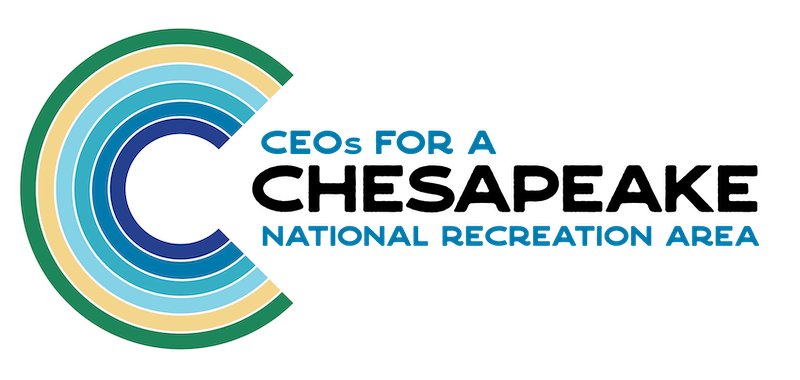
CEOs for CNRA, working with the Chesapeake Conservancy, is a diverse network of executives leading the call to build support for a CNRA within the business and non-profit community. We are open to every leader and every organization, big or small, that wants to further the effort to preserve our environment and help bolster our local economies.
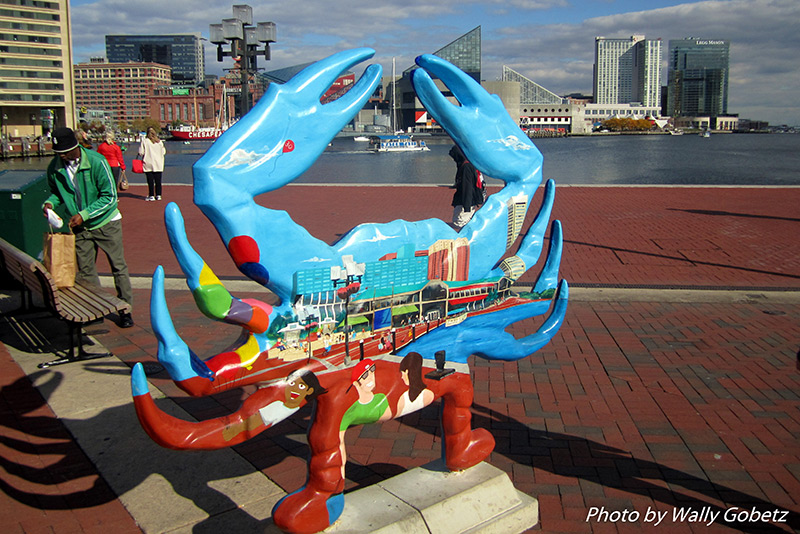
2024 Bay Paddle
 Thank you, Chesapeake Bay Paddle!
Thank you, Chesapeake Bay Paddle!
Join us for the 4th Annual Bay Paddle on July 20, 2024, funds from which benefit efforts to establish the CNRA.
The third annual Bay Paddle, held July 22-23, 2023, raised more than $16,000 to benefit Oyster Recovery Partnership, Chesapeake Conservancy and Waterkeepers Chesapeake. Chesapeake Conservancy extends our heartfelt gratitude to Bay Paddle Founder Chris Hopkinson, the Bay Paddle 2023 sponsors and the 2023 Bay Paddlers and their supporters!
2024 Bay Bridge Run
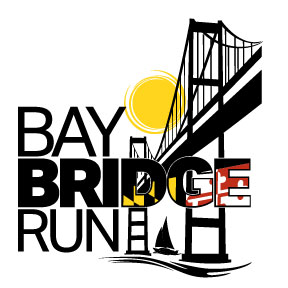 Join us for the 2024 Bay Bridge Run!
Join us for the 2024 Bay Bridge Run!

Courtesy Photo
Chesapeake Conservancy is honored to be a charity partner of the 2024 Bay Bridge Run with some proceeds benefiting CNRA advocacy efforts. Please join us! Contact J.T. Dean at jtdean@chesapeakeconservancy.org.


